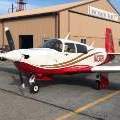How do you feel about the Mooney tail?
Mooney Tail
71 members have voted
-
Members Online
- Vulcan81
- Page307
- MDMooney
- MikeOH
- Shadrach
- Shmoo
- DonMuncy
- Dick Denenny
- Nico1
- flyingscot
- Schllc
- N201MKTurbo
- 00-Negative
- eman1200
- Culver LFA
- Ragsf15e
- Hank
- TaildraggerPilot
- toto
- Scooter
- Scott Ashton
- PT20J
- RescueMunchkin
- YuriE
- dkkim73
- jetdriven
- Parker_Woodruff
- amillet
- Greg Ellis
- neilpilot
- Alan Maurer
- cruiserflyer
- Flash
- MarquezJC


Recommended Posts